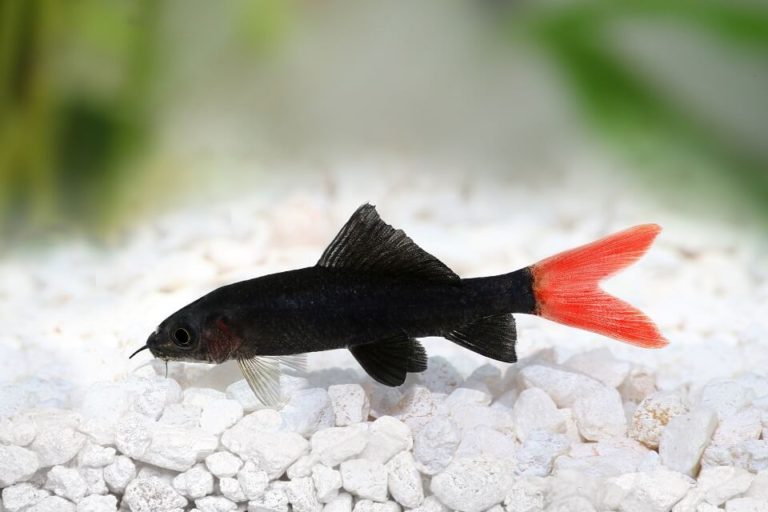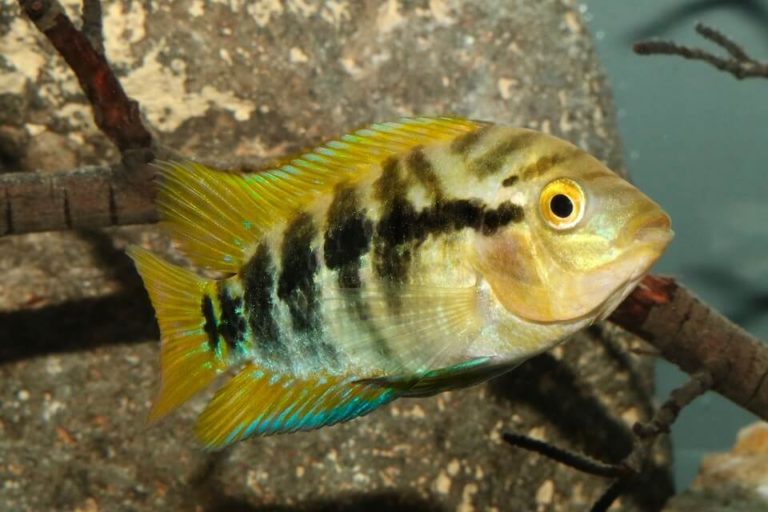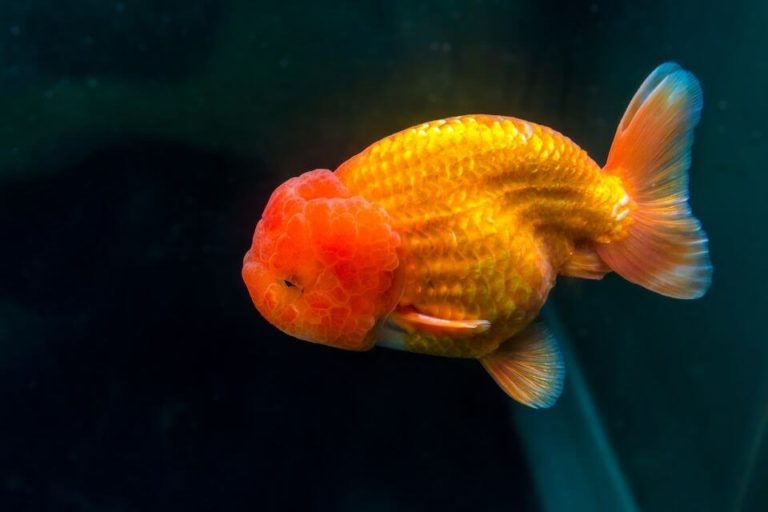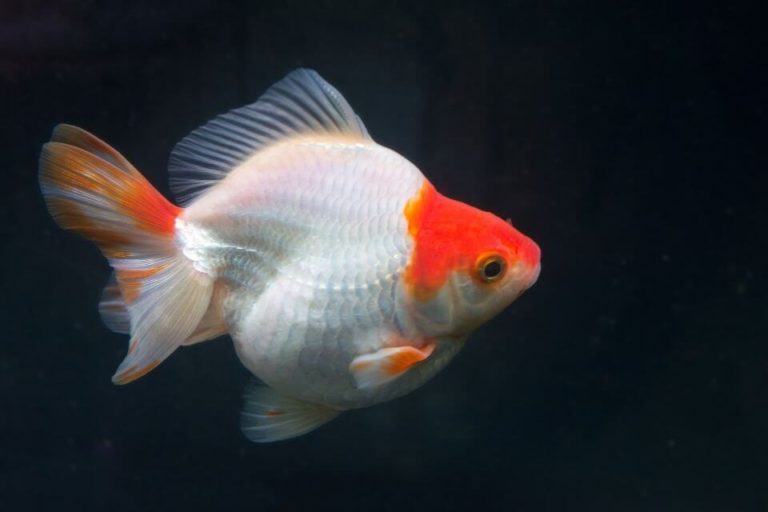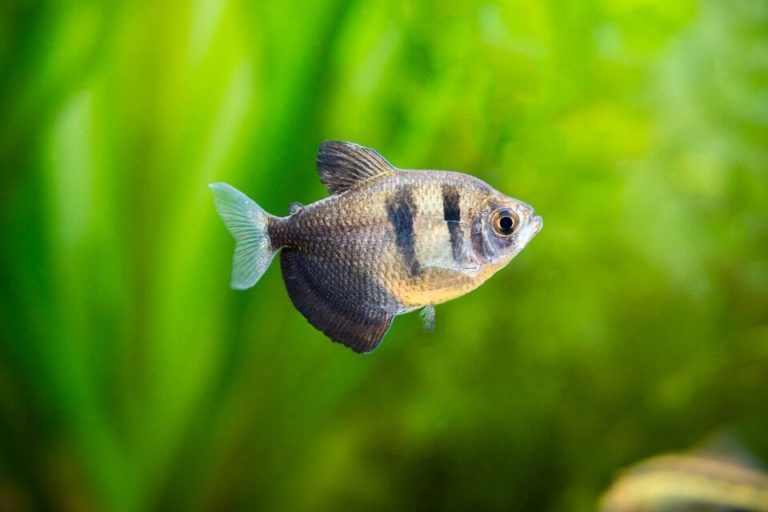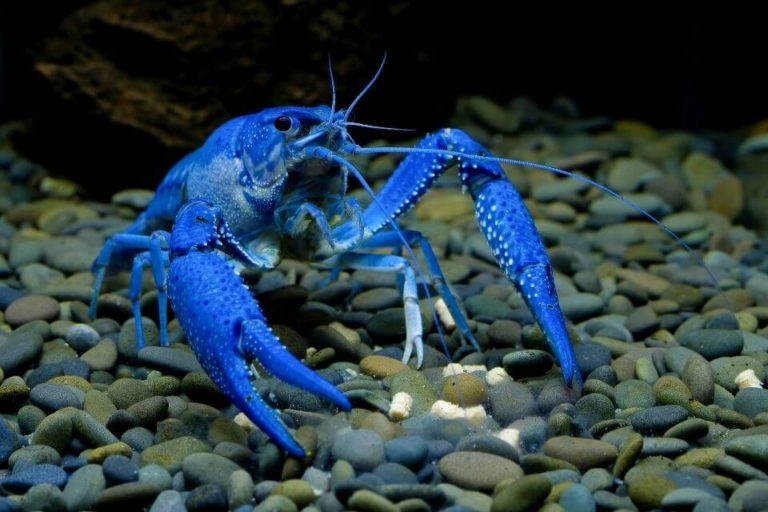Anacharis Aqaurium Plant Care: Planting, Grow, Propagation, Care & More
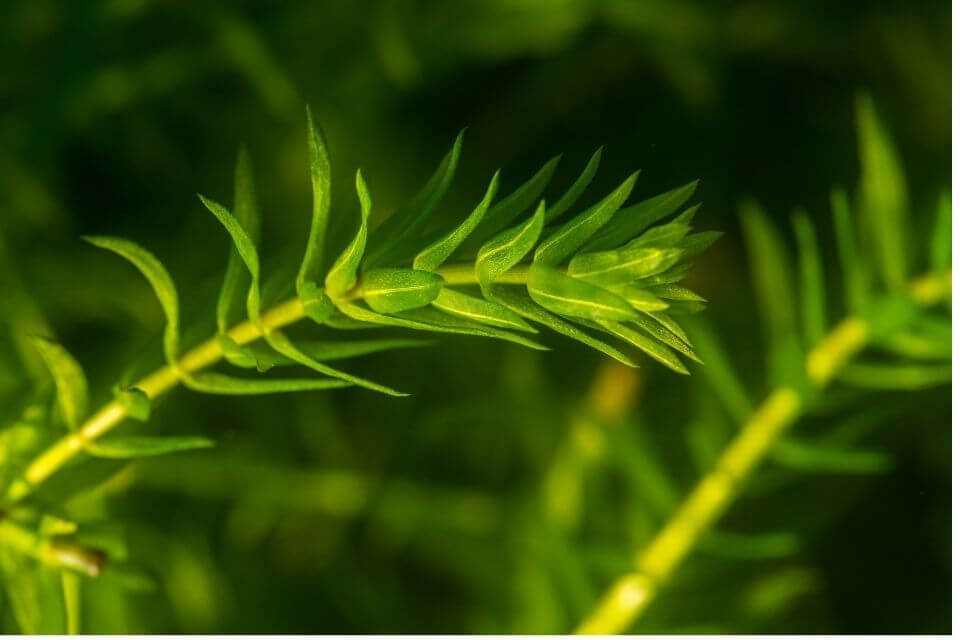
Anacharis Plant belongs to the family of Hydrocharitaceae. It resemebles Hydrilla Verticillata and Elodea Canadensis plants. There are small differences in these plants that are used to distinguish them.
Anacharis plant has larger leaves compared to these two plants. It has five to six whorls, while the Elodea Canadensis has three to four whorls and the Hydrilla verticillata has five whorls.
The scientific names of the Anacharis plant are Egeria Densa, which was formerly called Elodea Densa. Although, in fish stores, you may find both names.
The Anacharis plant has different names such as Brazilian Elodea, Brazilian Waterweed, and Egeria Densa. It is called “Water pests” in some other countries because it grows faster.
Its natural habitat falls and rises depending on the time of day and temperature. During hot weather, it comes to the surface and sinks during the night. It also thrives in conditions with carbon dioxide, PH, oxygen, and nutrients.
Below am going to share how to care, plant, and propagate the Anacharis plant. If you are planning to grow it, keep reading through the article to get detailed information that will help you navigate the journey of caring for this plant.
What Is The Anacharis Plant?
It is an aquatic plant that grows like a floating plant or from a substrate and reaches a maximum of 6 feet in length. It is easy to grow in large and medium aquariums and outdoor ponds.
These tall and lush aquatic plants thrive when water, temperature, and light conditions are met. They are easy to take care of and no prior plant handling experience is required, making them the best aquatic plants for beginners.
Additionally, the Anacharis Elodea plant is native to South America and is being studied for its potential to remove pollutants in water. The most noticeable characteristic is it reproduces and grows quickly.
In ponds and aquariums, this Anacharis aquarium plant spreads quickly because the floating stem develops roots from the leaf nodes. If left unmanaged, waterweed plants quickly form mats over the water surface.
Moreover, in at least 12 states in the United States, this plant is illegal. Therefore, check your state regulations and laws regarding this plant before planting.
Furthermore, the natural habitat of this plant is lakes and ponds where the water currents are in slow motion, such as canals and streams.
Anacharis Aquarium Plant Benefits
If this Anacharis Elodea plant grows densely in the aquarium, it provides shelter and makes good hiding places for shy fish, shrimp and fry. It also provides a good spot for fish to lay their eggs during breeding.
Additionally, this Elodea Anacharis plant is a dietary source for your aquarium inhabitants, such as apple snails, goldfish, and cichlids.
It prevents algae growth by absorbing all nutrients in the water and secreting a substance that prevents green-blue algae and phytoplankton growth. Moreover, it is a filter because it holds and catches debris that floats around the aquarium.
It is good aesthetics; it has a bright green coloration and tall stems that give aquariums a beautiful contrast making it a perfect decorative addition to the aquascape. Additionally, this plant has a metal absorption property.
Anacharis aquarium plant absorbs harmful chemicals from fish waste, tap water nitrates, ammonia, phosphates, carbon (iv) oxide, and decayed plant matter.
The Anacharis plant is a biofilm of a buffet, making it ideal for hatched shrimplets and fry. It also aerates and oxygenates the water tank. This plant provides a hiding place for fry and small fish including small shrimps.
It also acts as a source of food for the newly hatched fry. When fishes lay eggs on this plant, it provides shelter to the eggs.
Anacharis Growth, Size And Appearance
– Growth rate
The growth rate of this plant is rapid under the proper conditions. More light intensity adding fertilizer or carbon dioxide supplements makes this plant grow quickly.
The stems grow long shooting branches from the sides. If the growth of this plant takes over the tank, trim the long stems.
– Size
Anacharis Elodea plant height depends on the water surrounding it. It can attain a height of nine feet in the wild, but in captive care, the height is much less. Anacharis plant wild stem grows to three feet tall and has a thickness of three millimeters.
– Appearance
It has a green stem containing green leaves covering the entire stem. The shade of green in this plant varies depending on the water condition. Some Anacharis plants’ stems will have light green ones; others will have dark ones.
The leaves are produced from their nodes and the stems are tubular. Normally, each node has a whorl of three to six leaves. The lowest leaves of this plant can have three whorls, while the upper and middle leaves can have a whorl of four to six.
The leaves have an oblong or oval shape and their length is one to four centimeters with a thickness of two to five centimeters. The Anacahris Elodea plant has leaves at each branch and stringy white roots.
During summer, the Anacharis aquarium plant produces white flowers and each flower contains three petals.
Anacharis Care And Habitat Requirements
Anacharis plant care differs depending on the species, but most Anacharis do well in different water conditions and grow rapidly under quality aquarium lighting. Small, Anacharis are perfect for small fish tanks or aquariums with space limits.
Therefore, you will be required to maintain quality lighting and carbon dioxide injections for the Anacharis plant to grow healthy without becoming waterlogged.
– Suitable Aquarium Substrate
Aquarium substrate is a crucial part of growing aquatic plants. Plants need substrate to meet the needs of quality, nutrients, and texture. It is important to select a substrate that benefits your plants and visually pleases you.
A high-quality substrate will make the aquatic plant grow vibrant and lush while providing essential nutrients for healthy growth and proper rooting. The Anacharis grows in any substrate because it feeds through the water substrate and water column.
However, my preferred choice is sand containing aqua soil underneath or aquarium gravel to provide nutrients.
– Water Parameters Requirement
Anacharis plants do well in different water conditions, but the water should have a 6.5 to 7.5 pH. Water conditions that have a pH within this range are suitable for the growth of this plant.
Additionally, this plant thrives in 60 to 82 degrees Fahrenheit (16 to 27 °C) water temperatures. The Anacharis aquarium plant is known to survive in cooler environments with water temperatures is very low.
– Lighting Requirements
The Anacharis plant thrives in moderate light and it can die in tanks that have low light. These plants can also grow under high light intensity.
If the light intensity is excess or long hours, all types of algae will start growing on the Anacharis plant. Especially for older leaves and stems that are near the surface.
– Fertilizing
In a well-maintained aquarium, the Anacharis plant gets all the nutrients it needs, although in a case where you feel the need, you may add low doses into your tropical tank.
But in a plant-only aquarium with moderate light intensity and added carbon dioxide, the use of aquarium fertilizer is recommended. The best fertilizer to use is the APT complete.
How To Plant In A Tank (Step by Step)?
Step 1:
You remove the band holding the stems and you separate them. You should also check them one by one for any sign of damage.
Step 2:
If you spot damaged bits, withered especially where the bands were, carefully cut them off with a pair of scissors.
Step 3:
Remove the leaves on the stem bottom section and plant the stem in the tank. Then bury the Anacharis Elodea plant one to two inches in the substrate. Leave spaces of one inch between the plants.
Step 4:
Check to ensure that you have spaced the plant evenly, allowing enough space for growth. If they are planted too close to each other, they will fight for nutrients. Also, if you plant them too deeply, they will not root in the substrate and start to float.
Step 5:
You need to ensure that the plant is placed in the right spot in the tank. Many people prefer when they are placed in the background of the aquarium. You can also put them on the front part and on the sides too.
Whichever way you decide to place them as long as they bring out the beauty as they grow. Alternatively, you let the Anacharis plant float on water and it will grow.
Pruning And Trimming
It would be best to wait to cut the plant stem when it is at least eight inches long. You should cut the plant from the top three to four inches. The main stem will branch off after the cutting.
After that, you trim the leaves of the new cutting and push the stem back carefully into the substrate. The new cutting will grow roots that will anchor themselves in the substrate.
Moreover, Anacharis plant branches on its own; you can cut the branches off after they reach three inches to four inches in length.
Propagating Anacharis Aquarium Plant
Propagation of this plant is very easy; anyone can do it. It is done by cutting off a healthy stem from the main plant.
Step 1:
Select a healthy stem full of leaves at least eight inches long, then make your cutting.
Step 2:
Trim the plant’s leaves starting from the bottom, then bury the cut stem one to two inches in the substrate. The cutting will start developing roots and growth will begin again.
If you do not cut the leaves and plant the stem in the substrate, the leaves will decay and rot.
Anacharis Plant Tank Mates
The Anacharis Elodea plant has great benefits to fish in the aquarium tank. The plant increases oxygen content and provides shelter and hiding places for fish. Making Anacharis an ideal tank mate for tropical freshwater fish.
The Anacharis aquarium plant co-exists with a large variety of fish species peacefully. However, particular fish will feed on the Anacharis plant, such as the Goldfish and Cichlids.
These two would not make a good tank mate because they damage the plant. But if you want to provide your fish with natural food, then allowing them to feed on the plant is an excellent option.
Fish species that are ideal to keep as Anacharis plant tank mates are:
- Zebra Danio
- Black Neon Tetra
- Bloodfin Tetra
- Serpae Tetra
- Glowlight Tetra
- Ember Tetra
- Blue Crayfish
- Cherry Barb
- Swordtail FIsh
- Madagascar Rainbowfish
Origin And Distribution
The origin of the Anacharis plant is in Southeast Brazil, Argentina, and Uruguay. However, it grows throughout South and North America and other parts of the world because of human distribution.
It is widely used in aquariums and readily available in fish stores. The dark green coloring gives aquariums a lush appearance. Additionally, it is known to inhabit lakes, ponds, rivers, canals, and streams.
It has a capacity to tolerate a wide range of conditions making it suitable for beginners.
FAQs
Is Anacharis Easy To Grow?
Anacharis Elodea plant is adaptable to a wide range of conditions making it an easy plant to grow. Unlike other aquarium plants, this plant’s care challenges are not about keeping the plant alive but keeping the plant from growing so well that it outgrows its tank.
Anacharis plant grows quickly and can reach a height of about 9 feet in the wild. The thick growth of this plant looks like masses of submerged pine branches because their stems grow both upwards and sloped.
What About Floating Anacharis?
Floating Anacharis is a perfect way to oxygenate your aquarium and it helps remove phosphates or nitrates from the water. This plant can be used in both saltwater and freshwater tanks.
It is a good choice if you are a beginner because it is easy to care for. Ensure you give the plant a good trim to enhance new growth.
How do You Make Anacharis Bushy?
If you want to make your Anacharis bushy, you need to mimic conditions like those in the subtropical regions of their natural habitats. These include temperatures between 70 degrees to 80 degrees Fahrenheit, which is about room temperature.
Under these conditions, your plant will grow thicker and more robust. Moreover, Anacharis can survive in low light but will thrive faster under strong aquarium lighting of about 5 watts per gallon.
Also, remember to add aquarium plant fertilizer and CO2 to your plant to make it bushy.
Is Anacharis The Same As Hornwort?
Although these two plants are very similar, Anacharis is a different species. Anacharis is a hardy plant that grows faster during summer and spring. This plant is valued for its ability to behave like a pump and a filter.
Its growth slows down during winter and fall until they finally go dormant and start again in spring.
Hornwort, on the other hand, is a productive plant that thrives best in shade. It should not be exposed to direct sunlight. Hornwort appears in clusters and will occasionally grow in the same pond with Anacharis giving it extra shade.
It does not root to the bottom end of the tank.
Can Anacharis Grow In Sand?
Anacharis plant grows well in a sand substrate. This plant is made up of a long and thick stem with small green leaves that cover the entire length. Its foliage color can vary from one plant to another depending on the water conditions.
Additionally, you can float the Anacharis in the tank or root it in the sand. Either way, this plant will grow. Some people go to the extent of wrapping it around rocks, driftwood, or some kind of wait and let the plant grow all bunched up.
The plant thrives best under moderate light, or strong lighting, but when placed in a low-light environment it will die.
Does Anacharis Need CO2?
In coldwater aquariums, this plant will grow without any supplements such as CO2. However, if it is grown in a tropical tank it will require substrate and CO2 fertilizer added to the water after every week.
Does Anacharis Need Fertilizer?
The Anacharis in cold water or tropical aquariums. When you opt to keep it in a tropical aquarium, you will be needed to add fertilizer at regular intervals and a moderate amount of light. When you add CO2 fertilizer, this plant grows even in hard water.
Is Anacharis Winter Hardy?
Anacharis Elodea is a forgiving plant that tolerates a wide range of temperature conditions but thrives best under moderate sunlight. This plant can survive the freezing temperatures of water, but cannot survive in extended subzero temperatures.
What Are The Problems Associated With Anacharis?
– Melt
This plant may wither several days after planting in your tank or aquarium. This happens as a result of a change in the environment or problems with planting.
Introducing the plant in a new tank with different concentrations or rather chemistry will make it feel stressed and they will be indicated when they start shedding leaves.
However, this should not worry you much as the plant needs some time to acclimate. But it is worth noting that the harsh swings in the water composition can still cause the plants to shed their leaves and even decay at the bottom.
It is advisable that you let the plant float on water for some time. By doing this the plant will survive and more importantly, the roots will come off, and then you can root the roots into your substrate.
With this, you will not have to weigh your plant down.
– Discoloration
Anacharis aquarium plant needs bright illumination to photosynthesize and maintain its vibrant coloration. Therefore, if this plant is placed in low light conditions, it may exhibit a slightly yellowish or pale green appearance.
– Dormant State
At times you find out that the plant is just sitting in the tank. It is not growing or dying. Nothing happens at all. If this is the case, it is advisable that you check the light.
It is recommended that you start with a photoperiod of about 10 hours on a daily basis and then observe the reaction. If that does not happen, you can just start increasing the light intensity slowly.
If the plant is not planted, plant it. Also, add some nutrients and trim them. If this plant occupies all the space in the tank, it will almost stop growing even when provided with light, temperature, and feeding.
– Overgrowth
As mentioned above, this is a fast-growing plant that can outgrow your tank if left unattended. Moreover, it will create shade thus blocking the light from reaching the plant at the bottom.
Therefore, this plant should be trimmed and discarded from time to prevent overcrowding and the shadowing effect.
What To Look For When Buying This Plant
When you decide to buy an Anacharis plant, you want to consider the size of your aquarium as well as the water condition where you will be keeping them. Some species are for a wider range of temperatures while others are suited for colder water temperatures.
It is also important to check the light requirements for the plant that you are considering buying. Some plants require high-intensity light to thrive and remain healthy.
Lastly, ensure that you ask about the care requirements of your plant species. This plant has slightly different needs, so it is crucial to know how to care for them before bringing home your plant.
Final Thoughts
Anacharis aquarium plant is a great addition to your aquarium or pond, whether you plan to form a planted tank or you are just adding Anacharis for the benefits or even tank aesthetics.
If you give the proper care and maintain this plant, it rewards you with well-maintained and oxygenated water. Anacharis looks great when planted with varieties of plants in a tank.
It is also is perfect when you want to aquascape an aquarium and add a sleek look to your tank. The plant is far much better than other fake plants that are found in pet stores.
It is advisable that you buy a health plant before placing it in your tank. With this guide, you are now in a good position to grow and propagate your Anacharis in your tank to supply it with oxygen nutrients or for decorations.


